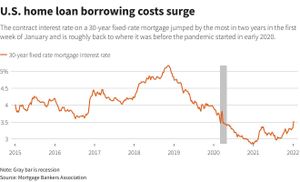On Saturday, February 2, 2025, President Donald Trump escalated tensions between the United States and its closest neighbors by following through with his threat to impose significant tariffs on imports from Canada, Mexico, and China. With this latest move, the President has positioned the world’s largest economy on the brink of a trade war with both its neighboring countries and the superpower of China.
Trump's executive order imposed 25% tariffs on most goods from Mexico and Canada, with some exceptions for Canadian energy products, which will see lower rates of 10%. Meanwhile, goods imported from China will face tariffs set at 10%. These tariffs are set to take effect as soon as Tuesday, marking the start of what could be tumultuous trade relations among these nations.
Mexico and Canada, the top two trading partners of the United States, did not take this economic jab lying down. They quickly pledged to retaliate against the American tariffs. Mexican President Claudia Sheinbaum stated her preference for dialogue over confrontation but felt compelled to act. "I've instructed my economy minister to implement the plan B we've been working on, which includes tariff and non-tariff measures in defense of Mexico's interests," she posted on social media after Trump's announcement.
Sheinbaum's response came amid Trump’s allegations of drug cartel alliances with her government, which she firmly denounced as slander. This rhetoric only heightened the tensions as countries braced for what could become tit-for-tat consequences.
Meanwhile, Canadian Prime Minister Justin Trudeau quickly condemned the new tariffs, stating, "(It) will put your jobs at risk, potentially shutting down American auto assembly, plants and other manufacturing facilities." Trudeau announced Canada would respond with $155 billion worth of tariffs against U.S. goods, starting with $30 billion on Tuesday and adding another $125 billion three weeks later. Products targeted by Canada include alcohol, lumber, and various appliances.
Trudeau did not mince words when addressing the potential fallout from the tariffs, drawing attention to how American families could see increased prices across the board. "They will raise costs for you, including food at the grocery store and gas at the pump," he stressed, warning Americans about the repercussions of the tariffs on their everyday lives.
Trump, bolstered by his self-proclaimed title of “Tariff Man,” asserted the tariffs were introduced as part of his broader strategy to compel Canada and Mexico to curb the flow of migrants and fentanyl across their borders. This justification seems intended to resonate with key voter concerns as Trump faces growing scrutiny over various domestic issues.
On the international front, China reacted vocally against the new tariffs, signaling intentions to challenge Trump's actions at the World Trade Organization. Chinese officials also hinted at taking other “countermeasures” to safeguard their economic interests.
National Foreign Trade Council President Jake Colvin expressed concern about the ramifications of the tariffs, particularly the risk of rising consumer prices. He remarked, "Trump's move threatened to raise the costs of everything from avocados to automobiles," urging the involved parties to find quick resolutions to avoid escalation.
This latest bout of retaliatory measures between the U.S., Canada, and Mexico reflects not just the rising stakes of global trade but also the delicate web of economic interdependence. The potential for increased costs and loss of jobs looms large for all involved, making it increasingly important to seek avenues for dialogue and resolution.
While the situation remains fluid, it’s clear the economic wounds inflicted by these tariffs will take time to heal. The realization of tougher trade negotiations will echo far beyond the headlines, reaching the pocketbooks of consumers across North America.



